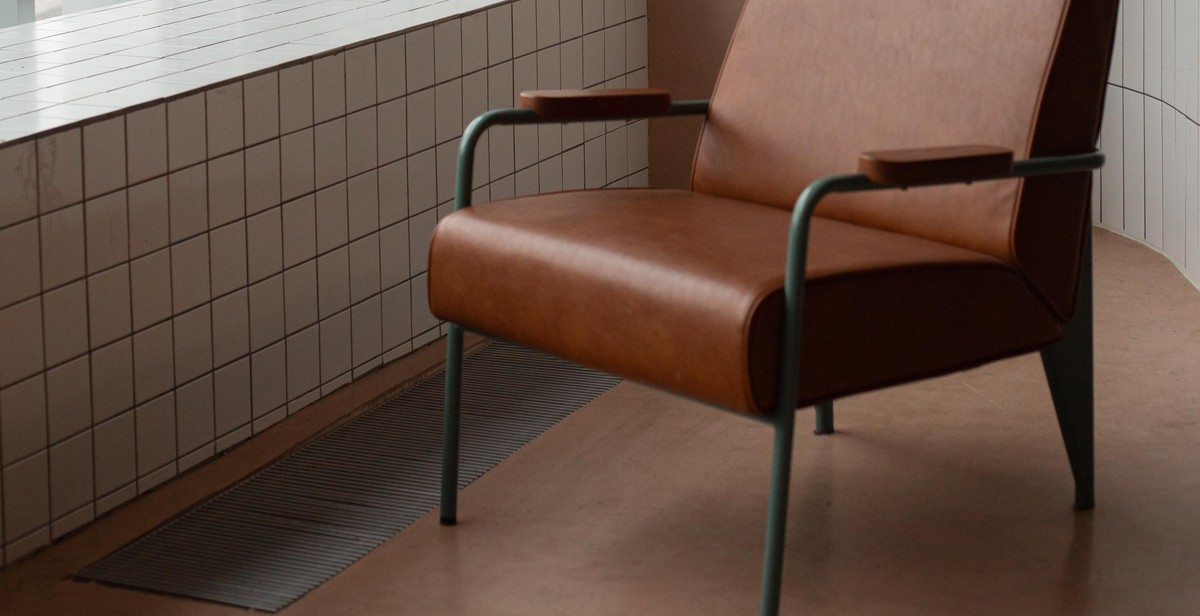How to Design a Functional and Stylish Living Room for Small Spaces
Designing a functional and stylish living room in a small space can be a challenging task. You want to maximize the limited space available while ensuring that the room is both aesthetically pleasing and practical. With the right approach, however, you can create a beautiful living room that suits your needs and makes the most of your space.
Consider Your Needs
The first step in designing a functional living room for a small space is to consider your needs. Do you need a space for entertaining guests or a place to relax and unwind? Will you be using the room for work or hobbies? Knowing what you need from your living room will help you make decisions about the layout and furniture.
Choose the Right Furniture
Choosing the right furniture is crucial when designing a small living room. You want to opt for pieces that are both functional and stylish. Consider using multi-functional furniture, such as a sofa bed or storage ottoman, to maximize space. Avoid large, bulky furniture that can overwhelm a small room.
Maximize Storage
Storage is essential in a small living room. Consider using built-in shelves or cabinets to maximize storage space. You can also use decorative baskets or storage ottomans to store items out of sight.
Use Color and Lighting
Color and lighting can make a big difference in a small living room. Lighter colors can make a room feel more spacious, while darker colors can make it feel smaller. Use lighting to create a warm and inviting atmosphere, and consider using mirrors to reflect light and create the illusion of more space.
By following these tips, you can design a functional and stylish living room that makes the most of your small space.

Assessing Your Small Living Room Space
Designing a functional and stylish living room for a small space can be a challenging task, but it’s not impossible. Before you start decorating, it’s essential to assess your living room space to determine the best layout and furniture placement. Here are some tips to help you:
Measuring Your Space
Measuring your living room space is crucial when designing a functional and stylish living room. It helps you determine the size and scale of furniture that will fit comfortably in your space. Here are some measurements to take:
- Measure the length and width of your living room.
- Measure the height of your walls.
- Measure the height and width of any doors and windows in your living room.
- Measure the distance between any doors and windows and the walls.
Once you have these measurements, you can start planning your living room layout.
Considering Room Layouts
When designing a living room for a small space, it’s essential to consider the layout carefully. Here are some popular living room layouts to consider:
- The L-Shaped Layout: This layout is ideal for small living rooms because it maximizes the use of space. It involves placing the sofa and the armchair in an L shape, with the coffee table in the middle.
- The U-Shaped Layout: This layout is ideal for small living rooms that need to accommodate more people. It involves placing the sofa and the armchair in a U shape, with the coffee table in the middle.
- The Open-Plan Layout: This layout is ideal for small living rooms that are part of an open-plan space. It involves placing the sofa and the armchair in a way that defines the living room area without closing it off from the rest of the space.
- The Minimalist Layout: This layout is ideal for small living rooms that want to create a minimalist and clutter-free space. It involves placing only essential furniture, such as a sofa, a coffee table, and a rug.
When choosing a layout, consider the size and shape of your living room, as well as your personal style and needs. Remember to leave enough space for people to move around comfortably.
| Layout | Pros | Cons |
|---|---|---|
| The L-Shaped Layout | Maximizes space, accommodates more seating, defines a seating area | May not work with all living room shapes, can feel cramped if not planned well |
| The U-Shaped Layout | Maximizes space, accommodates more seating, defines a seating area | Requires more space, may not work with all living room shapes |
| The Open-Plan Layout | Makes the living room feel part of a larger space, creates an airy feel | May not define a seating area well, can feel disconnected from the rest of the space |
| The Minimalist Layout | Creates a clutter-free space, emphasizes essential furniture | May not accommodate enough seating, can feel too sparse |
Assessing your small living room space is the first step in designing a functional and stylish living room. By measuring your space and considering different room layouts, you can create a comfortable and inviting space that reflects your personal style.

Designing for Functionality
When designing a living room for a small space, functionality should be your top priority. You need to choose furniture that is practical, multi-functional, and provides enough storage space. Here are some tips on how to achieve this:
Choosing the Right Furniture
When selecting furniture for a small living room, it is important to choose pieces that are proportionate to the space. Avoid large, bulky sofas or armchairs that take up too much space. Instead, opt for smaller, streamlined pieces that can easily fit in the room without overwhelming it.
Another important consideration is the material of the furniture. It’s best to choose materials that are easy to clean and maintain, such as leather or microfiber. These materials are durable and can withstand wear and tear, making them ideal for a small living room.
Multi-Functional Furniture
In a small living room, it’s important to make the most of the available space. One way to do this is by choosing multi-functional furniture. For example, a sofa bed can be used as a couch during the day and a bed at night. A storage ottoman can be used as a coffee table and also provides extra storage space.
Another great option is a wall bed or Murphy bed. These beds can be folded up and stored against the wall when not in use, freeing up valuable floor space.
Storage Solutions
Storage is essential in a small living room. Look for furniture pieces that offer built-in storage, such as a coffee table with drawers or a bookshelf with cabinets. Floating shelves can also provide extra storage space without taking up floor space.
It’s also important to declutter regularly to ensure that your living room remains functional. Get rid of any items that you no longer need or use, and find creative storage solutions for items that you want to keep but don’t necessarily need to have on display.
| Pros | Cons |
|---|---|
| – Choosing furniture that is proportionate to the space. – Opting for materials that are easy to clean and maintain. – Choosing multi-functional furniture. – Selecting furniture pieces that offer built-in storage. – Decluttering regularly. |
– Limited space. – Limited options for furniture placement. – Finding creative storage solutions can be challenging. |

Designing for Style
Designing a functional and stylish living room for small spaces requires careful consideration of various factors, including color scheme, lighting, decor, and accessories. Incorporating these elements in a cohesive manner can help create a comfortable and visually appealing space that reflects your personal style.
Color Scheme
The color scheme you choose for your living room can greatly influence the overall look and feel of the space. When designing for small spaces, it is important to choose colors that will make the room feel open and airy. Lighter colors such as pastels, neutrals, and whites can help achieve this effect. Additionally, using a monochromatic color scheme can help create a cohesive and visually pleasing look. Consider using accent colors sparingly to add pops of color without overwhelming the space.
Lighting
Lighting is an essential element in any living room design, but it is particularly important in small spaces where natural light may be limited. Strategically placed lighting fixtures can help create the illusion of a larger space and add warmth and depth to the room. Consider using a combination of overhead lighting, table lamps, and floor lamps to create a layered and functional lighting scheme. Additionally, using mirrors can help reflect light and make the space feel brighter and more open.
Decor
When it comes to decor, less is often more in small spaces. Choose a few statement pieces that reflect your personal style and complement the color scheme of the room. Consider incorporating multifunctional furniture pieces such as storage ottomans or coffee tables with built-in storage to maximize space. Additionally, using wall decor such as mirrors, artwork, or floating shelves can add visual interest without taking up valuable floor space.
Accessories
Accessories can add the finishing touch to any living room design, but it is important to use them sparingly in small spaces. Choose a few carefully curated accessories that complement the overall style of the room. Consider using decorative pillows, throws, and area rugs to add texture and warmth to the space. Additionally, incorporating plants or other natural elements can help bring life and energy to the room.

Conclusion
Designing a functional and stylish living room for small spaces can be a challenging task, but it’s not impossible. With the right planning, creativity, and a few tricks, you can make the most of your limited space and create a comfortable and inviting living room that reflects your style and personality.
Start by measuring your space and identifying your needs and priorities. Consider the layout, lighting, furniture, color scheme, and accessories that will work best for your space and lifestyle. Use multi-functional furniture, such as a sofa bed or storage ottoman, to maximize your space and keep it clutter-free.
When it comes to color and decor, choose light and neutral colors to make your space appear larger, and add pops of color and texture with accessories such as pillows, rugs, and curtains. Use mirrors and lighting to create an illusion of space and add depth to your room.
Remember that functionality and style go hand in hand, so don’t sacrifice one for the other. With the right balance, you can create a living room that is both functional and stylish, and that you’ll love spending time in.
By following these tips and being creative, you’ll be able to design a living room that is uniquely yours, and that will make the most of your small space.
